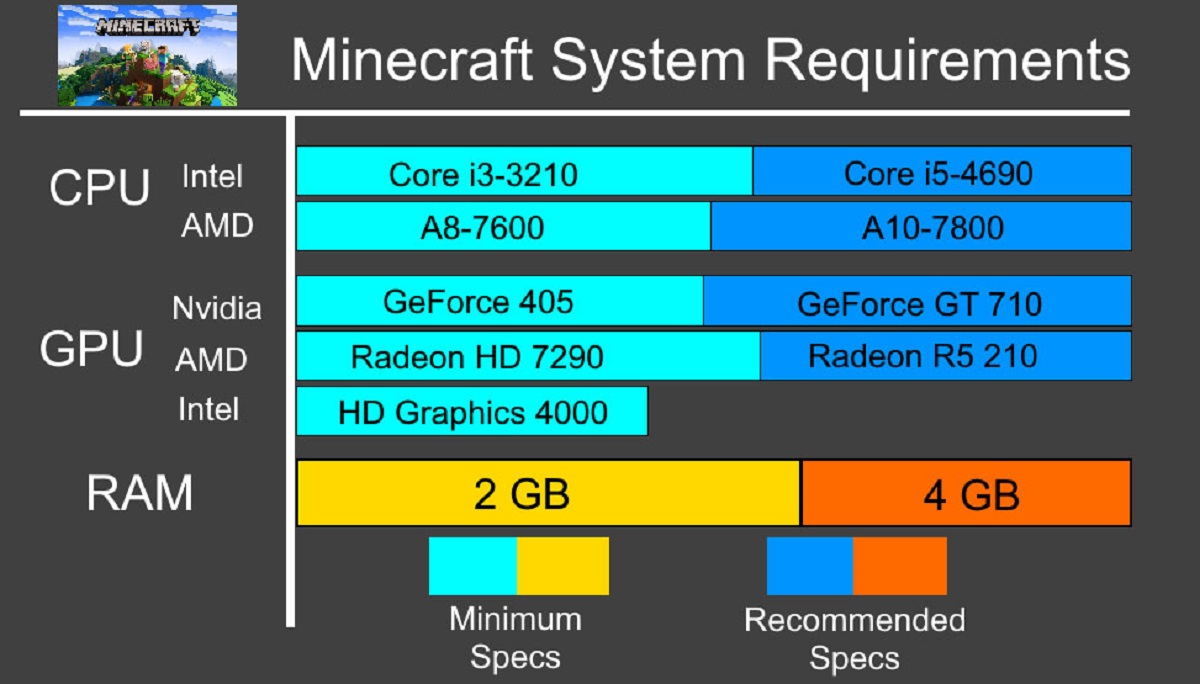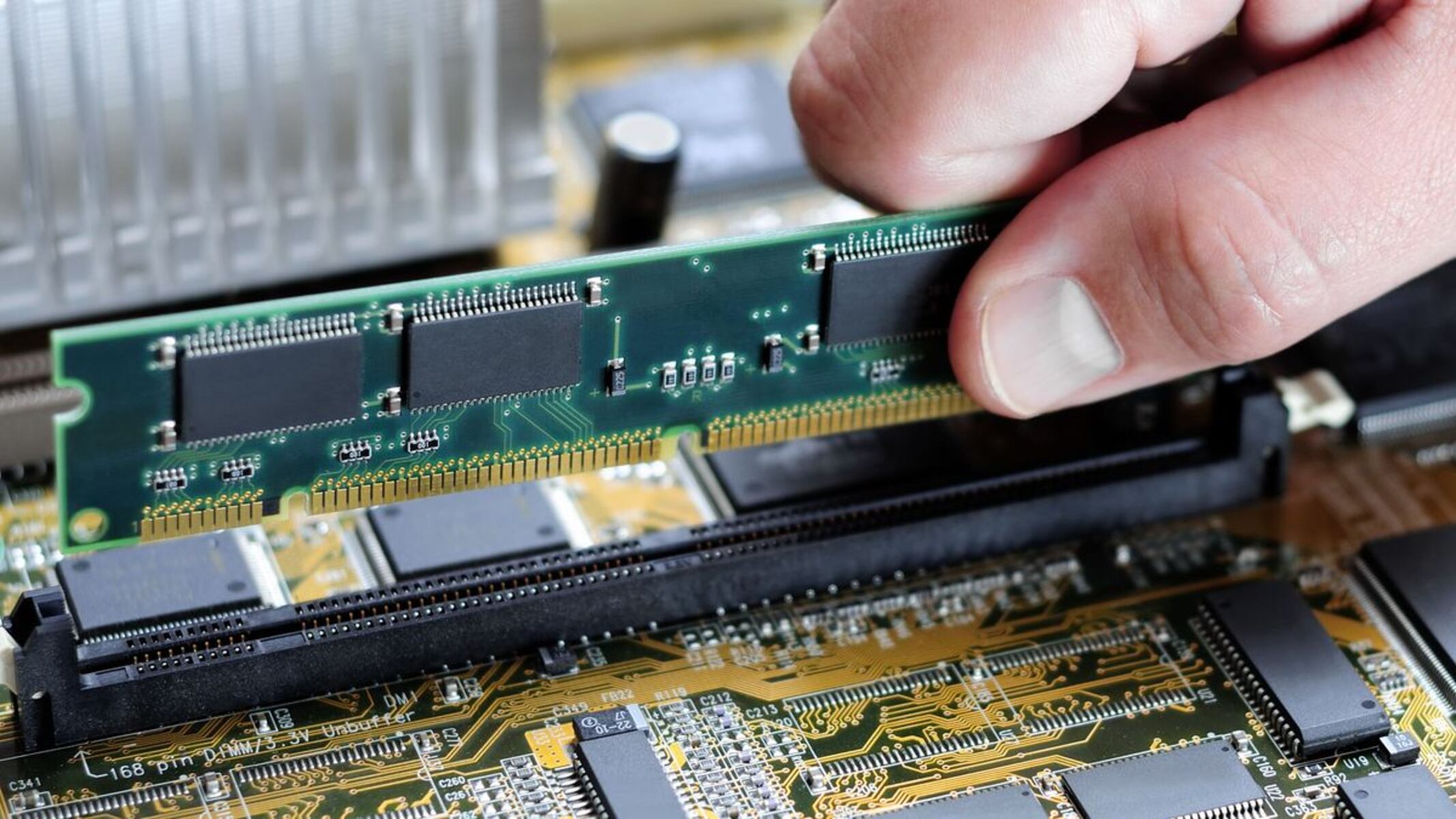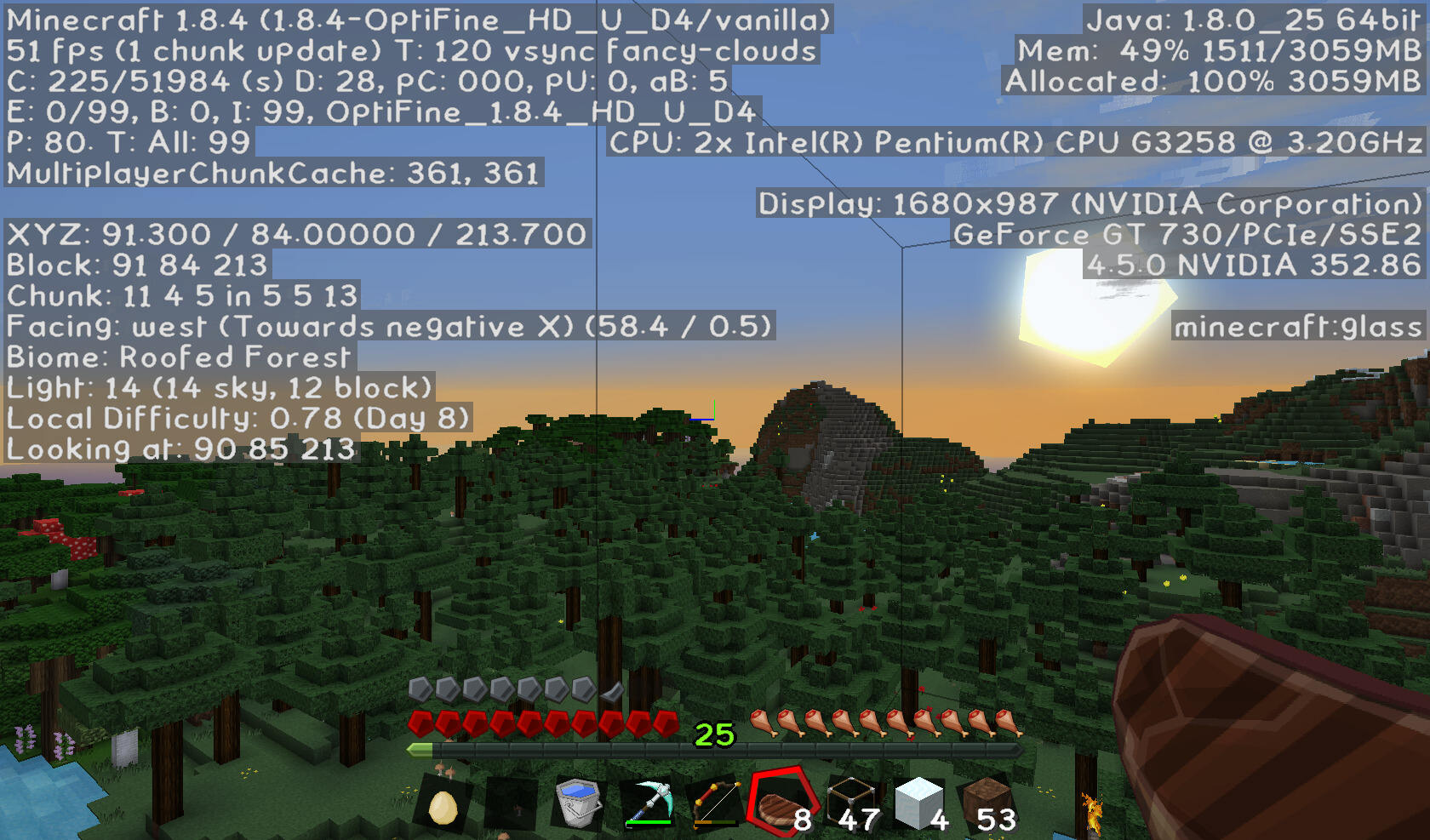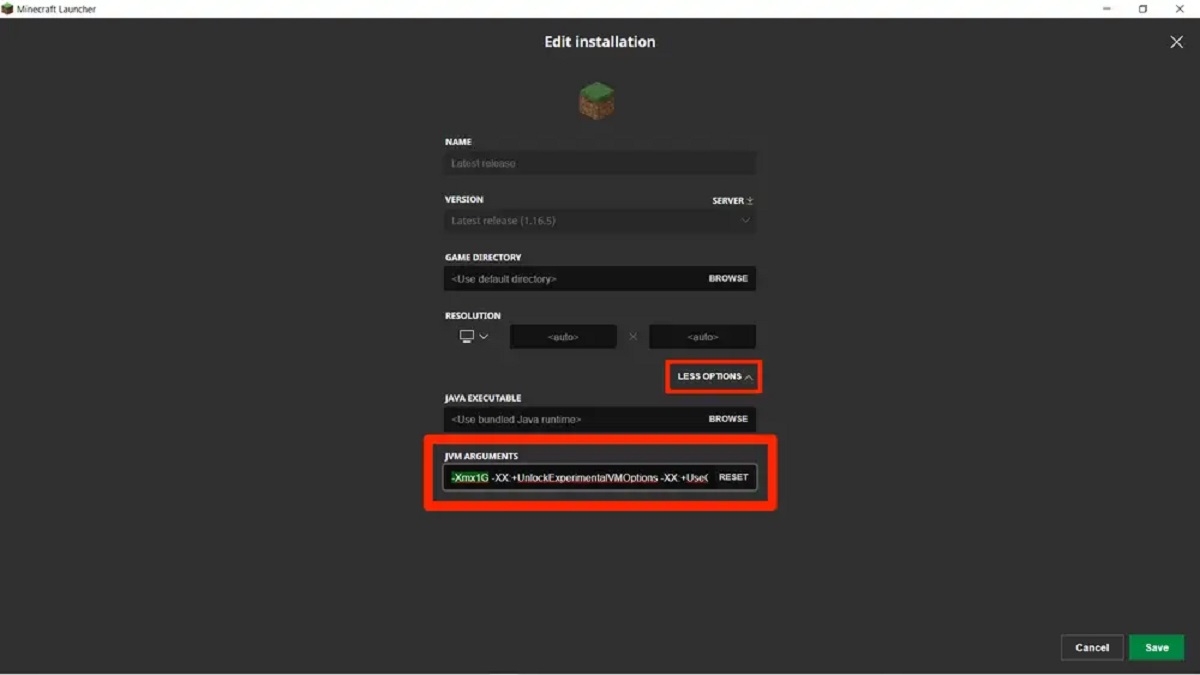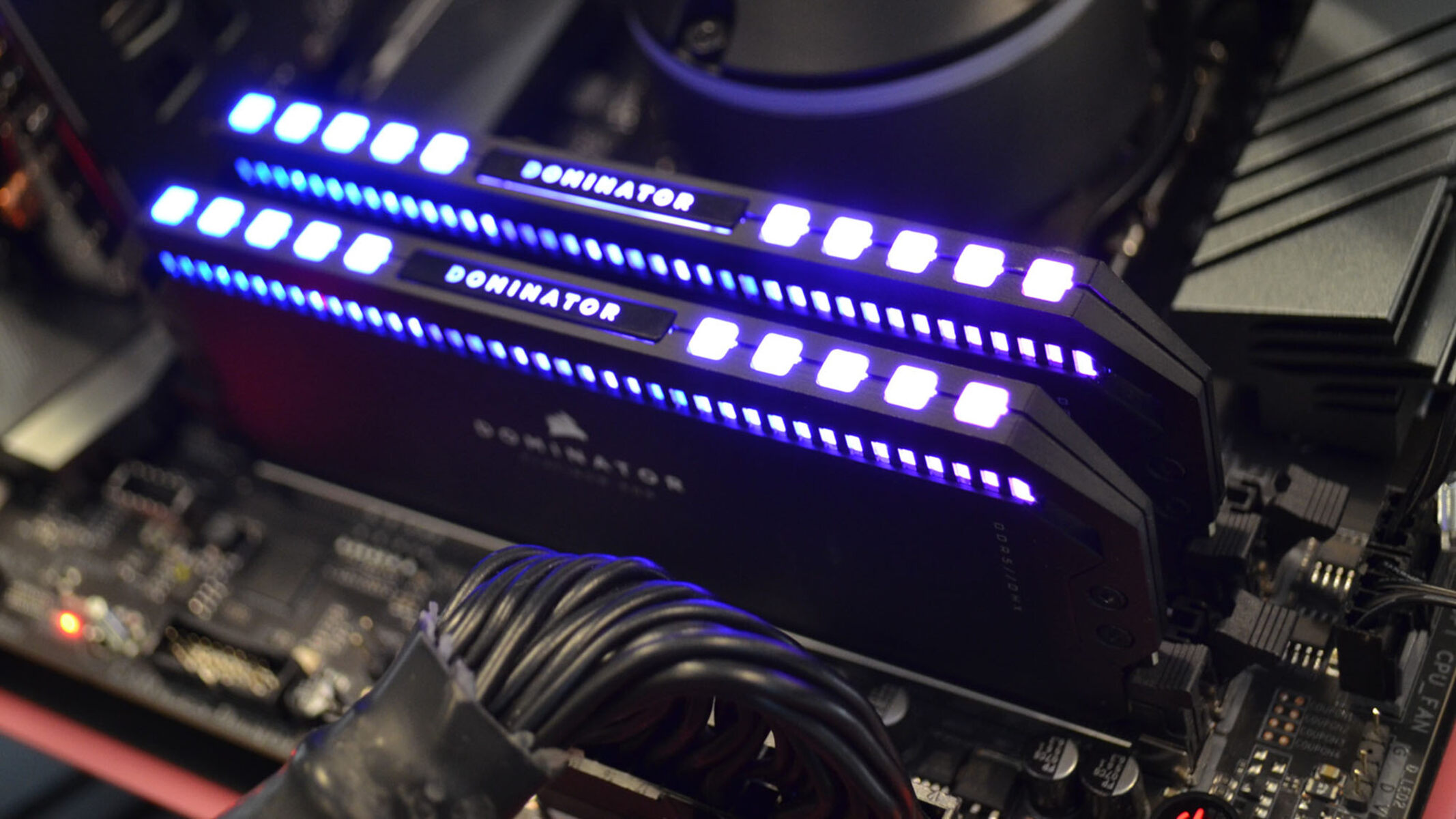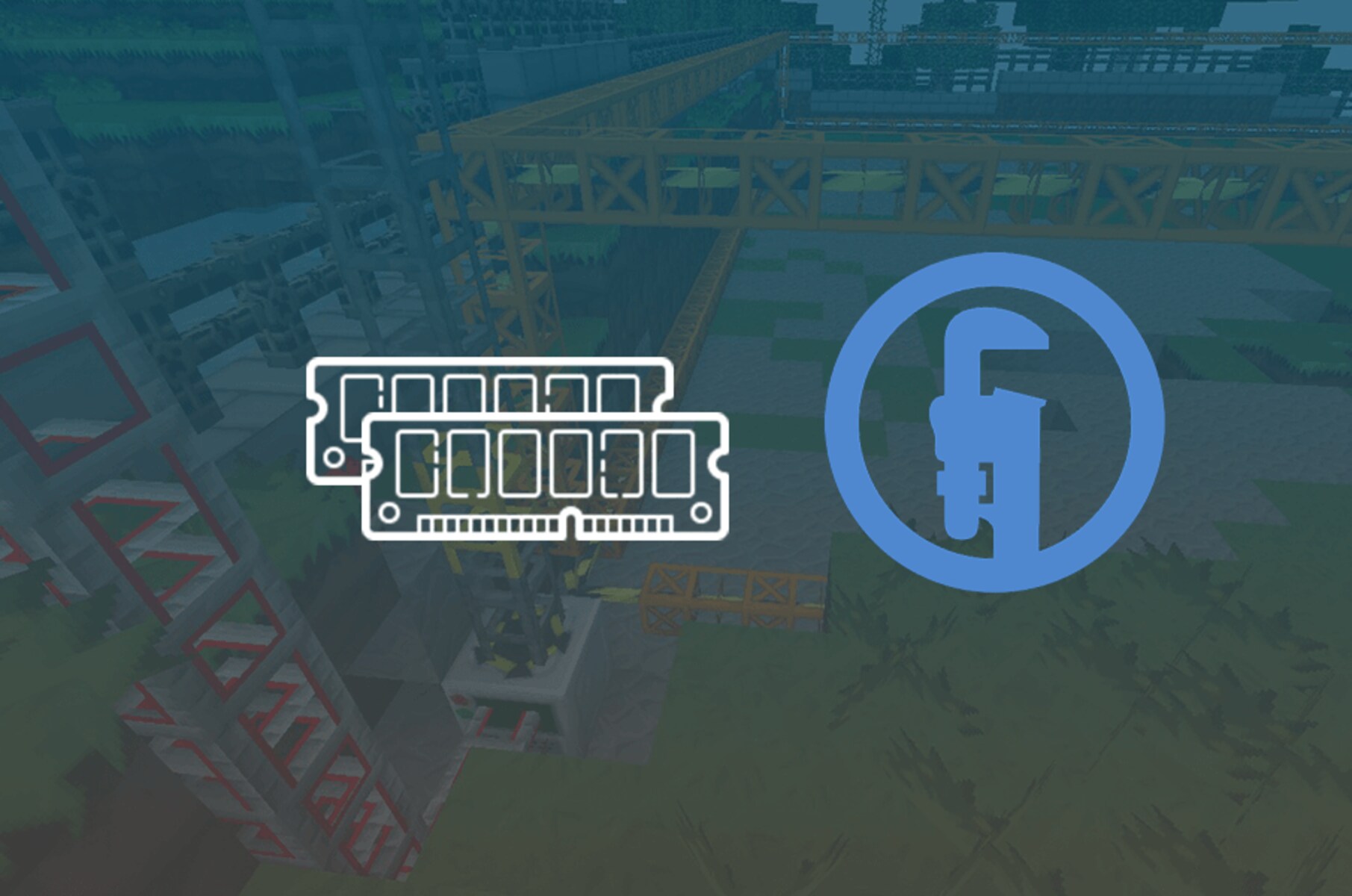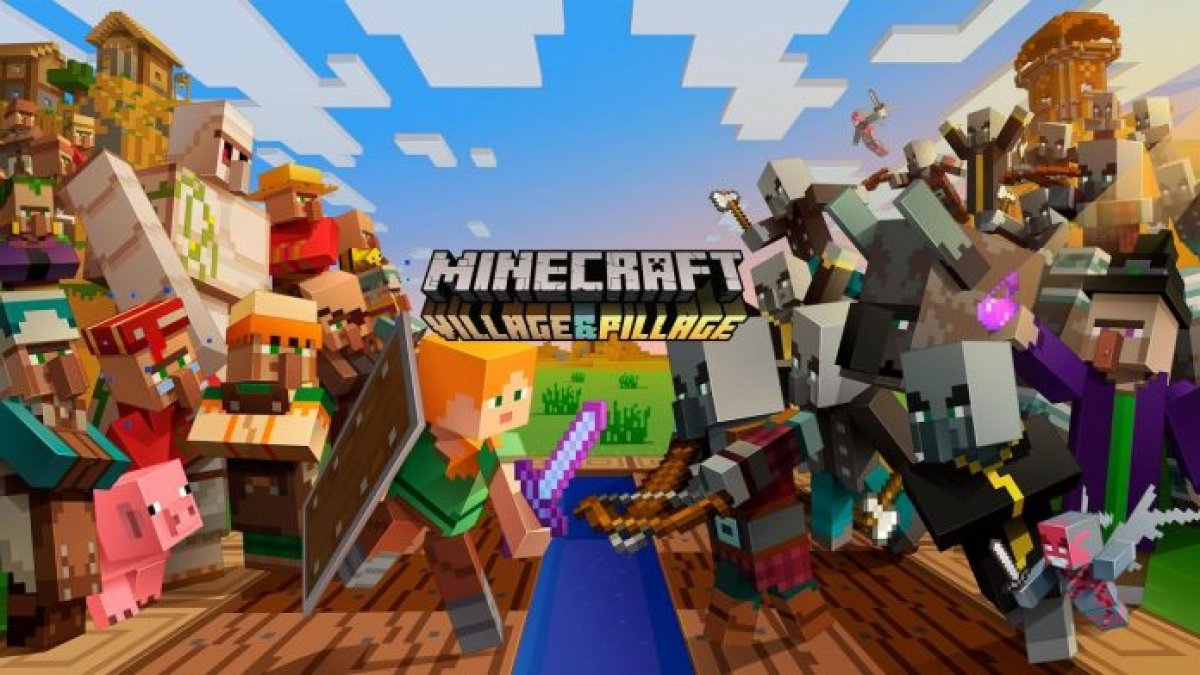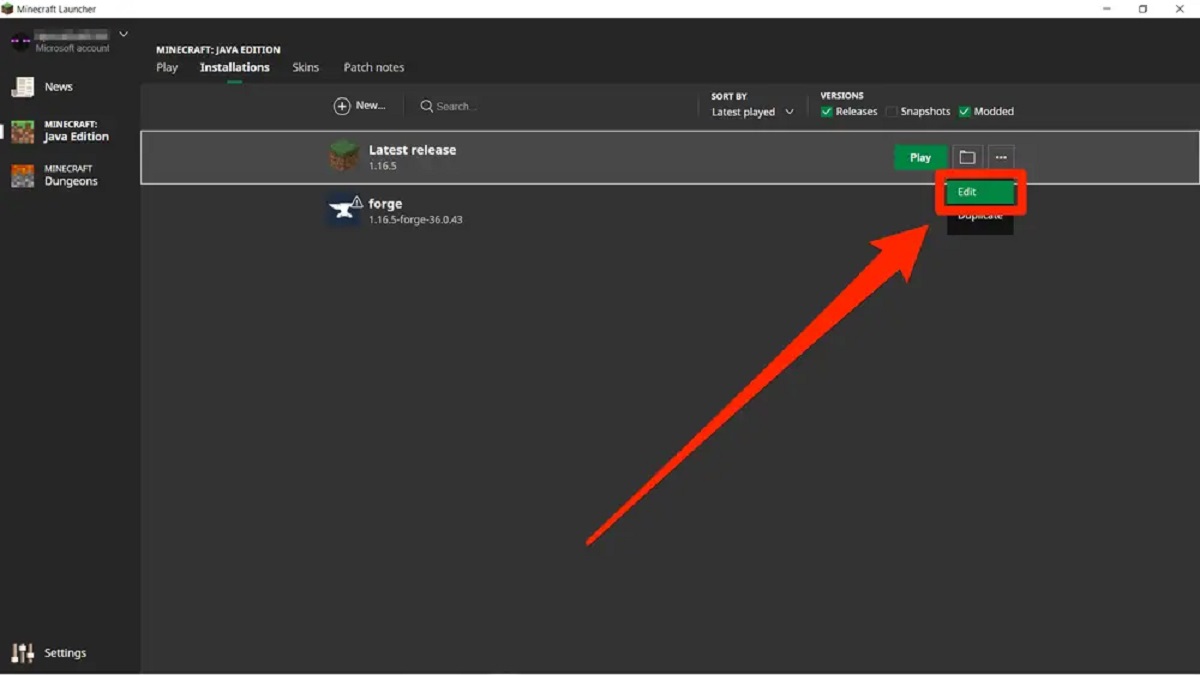Introduction
Minecraft is a wildly popular sandbox video game that has captured the hearts and minds of players all over the world. Whether you’re a casual player or a die-hard enthusiast, you know that a smooth and seamless gaming experience is crucial to fully enjoy this virtual world. One key factor that can greatly impact your Minecraft experience is the amount of RAM (Random Access Memory) allocated to the game.
RAM is a vital component of any computer system, responsible for storing and quickly accessing data that the computer needs to process. In the case of gaming, RAM plays a crucial role in ensuring smooth gameplay and preventing lag or stuttering. Minecraft, in particular, heavily relies on RAM to load and render game elements, such as textures, entities, and chunks.
By understanding the importance of RAM in gaming, you can make informed decisions about the amount of RAM you need to allocate to Minecraft. In this article, we will explore the minimum RAM requirements for Minecraft, as well as the recommended amount for optimal performance. Additionally, we will discuss the factors that can affect RAM usage in Minecraft and provide tips on optimizing the game’s performance without upgrading your RAM.
So, if you’re ready to dive into the world of Minecraft, buckle up and let’s explore how much RAM you actually need for an immersive gaming experience. Whether you’re venturing into the blocks for the first time or a seasoned player looking to enhance your gameplay, understanding RAM requirements will help you make the most of your time in this pixelated universe.
Understanding RAM and its Importance in Gaming
Before delving into the specific RAM requirements for Minecraft, it’s essential to understand the role of RAM in gaming and why it’s crucial for a smooth gaming experience. RAM, or Random Access Memory, is a type of computer memory that stores data that the computer can quickly access. Unlike the hard drive, which stores data permanently, RAM provides fast and temporary storage for data that is actively being used by the computer.
In the context of gaming, RAM plays a critical role in ensuring smooth gameplay and preventing performance issues like lag or stuttering. When you launch a game, various game files, textures, and other resources are loaded into RAM. This allows the computer to quickly access and display the necessary information, such as character models, environments, and objects on the screen.
Minecraft, known for its expansive open-world environment and vast landscapes, heavily relies on RAM to render and display the game world. This includes loading and rendering textures, generating and storing chunks (small sections of the game world), and managing the behavior of various entities, such as animals, monsters, and players. The more RAM allocated to Minecraft, the smoother and more seamlessly it can perform these tasks.
Insufficient RAM can lead to performance issues in Minecraft. When the available RAM is exceeded, the computer starts using virtual memory, which is significantly slower than physical RAM. This can result in a noticeable decrease in performance, including increased loading times, frequent frame drops, and overall sluggishness of the game.
Allocating an adequate amount of RAM to Minecraft is especially crucial if you heavily mod the game or play on servers with a large number of players and gameplay modifications. Mods and server plugins often introduce additional content and features that require extra resources to function properly. Without enough RAM, these additions can put further strain on your system, leading to even more severe performance issues.
In summary, RAM is a vital component for smooth gaming performance, including in Minecraft. It allows the game to quickly load and render resources, preventing lag and ensuring an immersive gaming experience. Understanding the importance of RAM in gaming will help you make informed decisions when it comes to allocating the right amount of memory to Minecraft.
Minimum RAM Requirements for Minecraft
When it comes to the minimum RAM requirements for Minecraft, the official recommendation from Mojang Studios, the game’s developer, is to have at least 4GB of RAM. This is the minimum amount needed to run Minecraft without any additional mods or resource packs. However, it’s important to note that this minimum requirement may not provide the best performance, especially if you plan to use mods or play on larger multiplayer servers.
If you’re playing the Java Edition of Minecraft, which is the original version of the game, it is highly recommended to allocate more RAM to the game to ensure smoother gameplay. Allocating 6GB or even 8GB of RAM can significantly improve performance, especially when using resource-intensive mods or playing on servers with a high number of players.
On the other hand, if you’re playing the Bedrock Edition of Minecraft, which is the version available on consoles, mobile devices, and Windows 10, the minimum RAM requirement is relatively lower. The official recommendation for the Bedrock Edition is to have at least 2GB of RAM. However, similar to the Java Edition, allocating additional RAM can enhance the gameplay experience, particularly when using mods or playing on larger servers.
It’s essential to keep in mind that while allocating more RAM can improve Minecraft’s performance, there are limitations. Allocating an excessive amount of RAM, such as 16GB or more, may not necessarily result in better gameplay. The performance boost tends to plateau after a certain point, and allocating too much RAM can cause other system issues and potentially impact the performance of other applications running simultaneously.
In summary, the minimum RAM requirement for Minecraft is 4GB for the Java Edition and 2GB for the Bedrock Edition. Allocating more RAM, such as 6GB or 8GB for the Java Edition, can improve performance, especially when using mods or playing on larger servers. It’s important to strike a balance and allocate an appropriate amount of RAM based on your specific setup to ensure the best possible gaming experience.
Recommended RAM for Optimal Minecraft Performance
While the minimum RAM requirements for Minecraft will allow the game to run, to achieve optimal performance and ensure a smooth gaming experience, it is recommended to allocate more RAM. The exact amount of RAM needed for optimal performance can vary depending on several factors, such as the version of Minecraft you’re playing, the presence of mods or resource packs, and the number of players on a server.
For the Java Edition of Minecraft, allocating 8GB of RAM is generally considered a good starting point for optimal performance. This additional RAM allows the game to load and render resources more efficiently, reducing lag and ensuring smoother gameplay. However, if you frequently use mods that require a lot of memory or play on large multiplayer servers, it may be beneficial to allocate even more RAM, such as 10GB or 12GB.
For the Bedrock Edition, allocating 4GB of RAM is recommended for optimal performance. This should provide enough memory for the game to run smoothly, even with resource packs and mods. However, if you’re playing on a heavily modded Bedrock Edition or participating in multiplayer sessions with a high player count, consider increasing the allocated RAM to avoid any potential performance issues.
It’s worth mentioning that while allocating more RAM can improve performance, there are other factors to consider as well. Your computer’s overall hardware specifications, including the processor and graphics card, will also play a role in Minecraft’s performance. If your system’s hardware is not capable of handling the game’s demands, simply allocating more RAM may not provide the desired improvements.
Additionally, keep in mind that the more RAM you allocate to Minecraft, the less memory will be available for other applications running on your computer. It’s crucial to strike a balance and allocate a sufficient amount of RAM for Minecraft without causing performance issues for other programs.
In summary, for optimal Minecraft performance in the Java Edition, allocate 8GB of RAM as a starting point, adjusting higher depending on your specific needs. For the Bedrock Edition, 4GB of allocated RAM is recommended. Remember to consider your system’s overall hardware specifications and balance the allocation to avoid impacting the performance of other applications.
Factors Affecting RAM Usage in Minecraft
When it comes to Minecraft, several factors can influence the amount of RAM the game requires to run smoothly. Understanding these factors can help you optimize game performance and allocate the appropriate amount of RAM for your setup. Some of the key factors affecting RAM usage in Minecraft include:
1. World Size and Complexity: The size and complexity of the Minecraft world can directly impact RAM usage. Larger worlds with more structures, biomes, and generated terrain require additional memory to load and render. If you’re playing on a particularly extensive or intricate world, consider allocating more RAM to accommodate the increased demands.
2. Mods and Resource Packs: Minecraft’s modding community is vast, offering a multitude of mods and resource packs that can enhance the game’s visuals and add new features. However, these additional modifications can significantly increase RAM usage. Mods that involve complex calculations or resource packs with high-resolution textures require more memory to function smoothly. If you frequently use mods or resource packs, allocate additional RAM accordingly.
3. Multiplayer and Server Size: Playing Minecraft with a group of friends or on a multiplayer server can lead to increased RAM usage, especially when multiple players are actively exploring and modifying the game world simultaneously. The more players and plugins present, the more memory will be needed to support the concurrent gameplay. If you’re participating in multiplayer sessions, consider increasing the allocated RAM to prevent performance issues.
4. View Distance: Minecraft allows you to adjust the view distance, which determines how far you can see in the game world. Higher view distances require more RAM to load and render the increased amount of visible terrain and entities. If you prefer a larger view distance, make sure to allocate sufficient RAM to support it and ensure smooth gameplay.
5. Performance of Other Applications: If you have other resource-intensive applications running simultaneously, such as video editing software or streaming tools, they can compete with Minecraft for system resources, including RAM. This can impact the game’s performance and lead to increased RAM usage. Try closing unnecessary applications to free up resources for Minecraft.
6. System Specifications: Your computer’s overall hardware specifications, including the amount and speed of RAM, the CPU, and the graphics card, can also affect RAM usage in Minecraft. Older or low-end systems may struggle to handle the demands of the game, even with sufficient RAM allocated. Upgrading your hardware, especially the amount of RAM, can help improve Minecraft’s performance.
By considering these factors and adjusting the RAM allocation accordingly, you can optimize Minecraft’s performance and ensure a smoother gameplay experience. Experiment with different RAM settings and monitor system performance to find the right balance that suits your specific needs and system capabilities.
How to Allocate More RAM to Minecraft
By default, Minecraft is typically allocated a certain amount of RAM, which may not be sufficient for optimal performance, especially if you’re using mods or playing on multiplayer servers. Fortunately, you can increase the amount of RAM allocated to Minecraft to ensure smoother gameplay. Here’s how you can allocate more RAM to Minecraft:
1. Launcher Settings: The first step is to open the Minecraft Launcher and navigate to the “Installations” or “Launch Options” section. Find the specific Minecraft installation or profile that you want to allocate more RAM to.
2. Edit Installation/Profile: Once you’ve located the desired installation or profile, click on it to access the editing options. Look for a setting called “JVM Arguments” or “Java Arguments.”
3. Allocate More RAM: In the JVM or Java Arguments field, you will find a line of text that starts with “-Xmx” followed by a number. This number represents the maximum amount of RAM allocated to Minecraft. Modify this number to increase the allocated RAM. For example, if the line reads “-Xmx4G”, change it to “-Xmx8G” to allocate 8GB of RAM.
4. Save Changes: After adjusting the RAM allocation, save the changes in the launcher. You can now launch Minecraft, and it will utilize the newly allocated RAM.
5. Monitor Performance: While allocating more RAM can improve Minecraft’s performance, it’s essential to monitor system performance to ensure optimal results. Keep an eye on the game’s memory usage and system resource utilization to ensure that the allocated RAM is sufficient and doesn’t cause performance issues in other applications.
It’s important to note that the amount of RAM you can allocate to Minecraft depends on your system’s available resources. Allocating too much RAM can lead to performance issues and may impact other applications running on your computer. It’s recommended to find a balance between allocating enough RAM for Minecraft and leaving sufficient memory for other processes.
Additionally, be aware that if you’re running a 32-bit version of Java, you may encounter limitations when attempting to allocate more than 4GB of RAM. To allocate a larger amount of RAM, you’ll need to switch to a 64-bit version of Java.
Following these steps will allow you to allocate more RAM to Minecraft and enhance the game’s performance. Experiment with different RAM settings to find the optimal configuration that suits your specific setup and provides a smoother and more enjoyable Minecraft experience.
Tips to Optimize Minecraft Performance without Upgrading RAM
If you’re experiencing performance issues in Minecraft but are unable to upgrade your RAM, there are still several tips and techniques you can employ to optimize the game’s performance. These methods focus on maximizing the efficiency of your current system resources. Here are some tips to optimize Minecraft performance without upgrading your RAM:
1. Lower Graphics Settings: One of the simplest ways to improve performance is by adjusting the graphics settings in Minecraft. Lowering the render distance, turning off fancy graphics, reducing particle effects, and disabling smooth lighting can significantly reduce the strain on your system resources.
2. Close Background Applications: Close any unnecessary background applications that are consuming your system’s resources. Programs such as web browsers, music players, or file-sharing applications can use up valuable memory and processing power, impacting Minecraft’s performance.
3. Optimize Java Settings: Minecraft runs on Java, and tweaking Java settings can help improve performance. Allocate more CPU cores to Minecraft by adjusting the Java virtual machine (JVM) settings. This can be done through the Minecraft launcher by modifying the Java arguments, specifically the “-XX:ParallelGCThreads” parameter.
4. Update Java and Graphics Drivers: Ensure that you have the latest version of Java installed on your system. Additionally, update your graphics card drivers to the most recent version. Updated drivers often include performance optimizations and bug fixes that can positively impact Minecraft’s performance.
5. Optimize System Resources: Close any unnecessary programs or processes running in the background that may be using up system resources. Disable resource-intensive features like Windows Aero or other visual effects to free up memory and processing power.
6. Use Optifine: Optifine is a highly popular Minecraft optimization mod that provides various graphical and performance enhancements. It allows you to customize your graphics settings, improve FPS (frames per second), and optimize resource usage. Installing and configuring Optifine can significantly improve Minecraft’s performance.
7. Clear Minecraft Cache: Minecraft caches various files and data, and over time, this cache can accumulate and affect performance. Clearing the Minecraft cache can help improve performance. To do this, navigate to the “.minecraft” folder on your computer and delete the “cache” folder.
8. Use Lightweight Resource Packs: Resource packs with high-resolution textures can strain your system’s resources. Opt for lightweight resource packs with lower resolution textures to reduce the memory requirements and improve performance.
9. Use Dedicated Servers: If you’re experiencing lag or performance issues while playing on multiplayer servers, consider playing on dedicated servers with faster and more stable connections. Dedicated servers often provide smoother gameplay experiences due to their optimized hardware and network configurations.
10. Monitor Performance and Adjust Settings: Keep an eye on your system’s performance while playing Minecraft. Use in-game performance monitors or third-party tools to identify any performance bottlenecks. Adjust settings accordingly to achieve the desired balance between performance and visual quality.
By following these tips, you can optimize Minecraft’s performance without requiring a RAM upgrade. Adjusting graphics settings, closing unnecessary background applications, optimizing Java settings, and using performance-enhancing mods can help create a smoother and more enjoyable Minecraft experience on your current system.
Conclusion
Minecraft is a game that has captivated millions of players around the world, and optimizing its performance is essential for a smooth and enjoyable gaming experience. Understanding the importance of RAM and how it affects Minecraft’s performance is crucial in achieving optimal gameplay.
We explored the minimum RAM requirements for Minecraft, which are 4GB for the Java Edition and 2GB for the Bedrock Edition. However, it’s important to note that these minimum requirements may not provide the best performance, especially if you use mods or play on multiplayer servers.
To achieve optimal performance, it is recommended to allocate more RAM to Minecraft. For the Java Edition, allocating 8GB of RAM as a starting point is often suggested, while for the Bedrock Edition, 4GB is recommended. Adjustments may be necessary based on your specific setup and gameplay needs.
Factors such as world size and complexity, mods, multiplayer sessions, view distance, performance of other applications, and system specifications can impact RAM usage in Minecraft. Taking these factors into account and optimizing settings accordingly can help enhance the game’s performance.
If upgrading your RAM is not feasible, several tips and techniques can still be employed to optimize Minecraft performance. Lowering graphics settings, closing background applications, optimizing Java settings, updating Java and graphics drivers, and using performance-enhancing mods like Optifine are some effective strategies.
Overall, balancing memory usage, adjusting game settings, and keeping your system optimized can greatly improve the performance of Minecraft, leading to a smoother and more immersive gaming experience.
So, whether you’re exploring the vast open worlds, building remarkable structures, or engaging in thrilling multiplayer sessions, taking the necessary steps to optimize Minecraft’s performance will ensure that you’re fully immersed in the pixelated universe without any performance hindrances.







